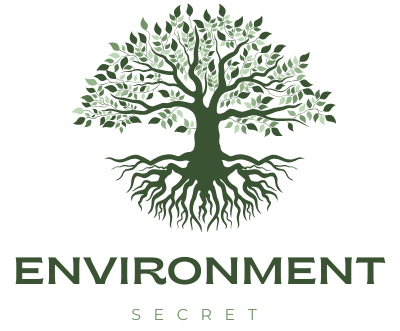What is Desertification? Desertification is a significant environmental issue that poses a threat to ecosystems, economies, and societies worldwide. It describes the process by which fertile land deteriorates, becoming barren and unable to sustain vegetation or life as a result of natural and human influences. Although the name suggests the creation of deserts, desertification occurs primarily in dryland regions, including arid, semi-arid, and dry sub-humid areas. This process has catastrophic implications, including reduced agricultural productivity, biodiversity loss, and displacement of human populations.
In this detailed article, we will comprehensively examine the causes, effects, and possible solutions to desertification, offering insights into its global implications and exploring actionable strategies for mitigation and reversal.
1. Introduction to Desertification
Desertification is a form of land degradation that affects nearly 40% of the Earth’s land area, with over 1.5 billion people living in regions directly impacted by it. The phenomenon results from a complex interplay of climatic and anthropogenic factors, including prolonged droughts, deforestation, unsustainable agricultural practices, and overgrazing.
Since the 1970s, the world has witnessed a surge in desertification events, most notably in Africa’s Sahel region, where millions of people have experienced famine and displacement due to persistent land degradation.
2. Defining Desertification: Scope and Characteristics
What is Desertification Characteristics
Desertified regions are characterized by:
- Sparse Vegetation: Vegetation loss leaves soil exposed to erosion.
- Soil Degradation: Soil becomes compacted, loses nutrients, and is prone to erosion.
- Water Scarcity: Diminished water retention reduces the availability of groundwater and surface water.
- Biodiversity Loss: Native plant and animal species struggle to survive.
Land Degradation vs. Desertification
While land degradation refers to a general decline in land productivity and quality, desertification specifically describes degradation in drylands, where the balance between vegetation, water, and soil is disrupted.

3. What is Desertification Causes?
What is Desertification Natural Causes?
- Droughts:
Prolonged dry spells reduce soil moisture, kill vegetation, and accelerate erosion. - Climate Variability:
Natural fluctuations in temperature and rainfall patterns contribute to desertification in vulnerable regions.
What is Desertification Anthropogenic (Human-Induced) Causes?
- Deforestation:
Clearing forests for agriculture or development eliminates trees that stabilize soil and regulate water cycles. - Unsustainable Agriculture:
Practices like over-cultivation, monocropping, and excessive irrigation deplete soil nutrients and structure. - Overgrazing:
Livestock grazing removes vegetation faster than it can regrow, leaving soil exposed to erosion. - Urbanization and Industrialization:
The expansion of cities and infrastructure encroaches on fertile lands and disrupts natural ecosystems. - Water Mismanagement:
Poorly managed irrigation systems and excessive groundwater extraction result in soil salinization and degradation.
4. What is Desertification Global Impact ?
Environmental Effects
- Soil Erosion: Loss of topsoil reduces land productivity.
- Biodiversity Decline: Ecosystems lose their ability to support diverse plant and animal species.
- Climate Feedback Loops: Degraded land emits more carbon, exacerbating global warming.
Economic Impacts?
- Agricultural Decline: Reduced crop yields threaten food security and increase poverty.
- Economic Losses: Desertification costs the global economy $42 billion annually in lost productivity.
Social Consequences
- Migration and Displacement: Desertification forces communities to relocate, creating environmental refugees.
- Conflict Over Resources: Scarce land and water resources lead to disputes and instability.
5. What is Desertification Regions Most Affected ?
Africa’s Sahel Region:
- Persistent droughts and poor land management make the Sahel one of the most vulnerable areas.
China’s Gobi Desert:
- Expanding deserts threaten agricultural land and human settlements.
Latin America:
- Overgrazing and water mismanagement have degraded vast tracts of land in Mexico and Argentina.
Middle East and Central Asia:
- Water scarcity and salinization exacerbate desertification in countries like Iran and Uzbekistan.
6. The Impact of Climate Change on Desertification
Climate change significantly exacerbates desertification, a process where fertile land becomes increasingly arid and unproductive. Rising global temperatures lead to altered precipitation patterns, resulting in prolonged droughts in many regions. These changes stress ecosystems, diminish water resources, and reduce soil moisture, making it difficult for vegetation to thrive.
As temperatures rise, the frequency and intensity of extreme weather events, such as heatwaves and storms, also increase. This not only disrupts agricultural practices but also leads to soil erosion and degradation. Moreover, climate change affects the livelihoods of communities dependent on agriculture, pushing them towards migration and exacerbating social tensions.
Desertification can further contribute to climate change by releasing stored carbon from soils and vegetation, creating a feedback loop that intensifies both issues. To combat these challenges, sustainable land management practices, afforestation, and policy interventions are crucial. Addressing desertification is essential for preserving biodiversity, ensuring food security, and mitigating the impacts of climate change on vulnerable populations.

7. Human Activities Contributing to Desertification
- Over-Exploitation of Resources: Excessive logging, mining, and farming strain ecosystems.
- Poor Land Management: Lack of crop rotation and soil conservation accelerates land degradation.
- Industrial Emissions: Pollution alters local climates and damages ecosystems.
8. The Importance of Combating Desertification
Combating desertification is essential for:
- Food Security: Ensuring stable crop production to feed growing populations.
- Climate Change Mitigation: Restoring land to absorb carbon dioxide.
- Biodiversity Conservation: Preserving habitats and species diversity.
9. Approaches to Preventing and Reversing Desertification
Sustainable Agriculture and Land Use
- Crop Rotation: Prevents nutrient depletion in soils.
- No-Till Farming: Reduces soil erosion and preserves organic matter.
- Organic Fertilizers: Enhances soil fertility naturally.
Water Management Solutions
- Drip Irrigation: Delivers water efficiently to crops, minimizing waste.
- Rainwater Harvesting: Harvests and conserves rainwater for agricultural purposes..
- Aquifer Recharge: Replenishes groundwater reserves through managed water infiltration.
Reforestation and Agroforestry
- Tree Planting: Stabilizes soil, prevents erosion, and improves water retention.
- Agroforestry: Combines crops and trees to enhance ecosystem health and productivity.
10. Technological Innovations in Combating Desertification
- Satellite Monitoring: Tracks land degradation patterns and guides restoration efforts.
- AI-Driven Land Management: Examines environmental data to enhance land-use efficiency..
- Genetically Engineered Crops: Develops drought-resistant plant varieties.
11. Community-Led and Policy-Driven Approaches
Community Involvement
- Education: Teaches sustainable land management techniques.
- Local Projects: Encourages afforestation and conservation initiatives.
Policy Recommendations
- Incentives for Sustainable Practices: Rewards farmers for using eco-friendly methods.
- International Cooperation: Strengthens global commitments under the UNCCD framework.
12. Global Initiatives and Success Stories
The Great Green Wall in Africa
This ambitious project aims to plant an 8,000-kilometer wall of trees across the Sahel to combat desertification and restore ecosystems.
China’s Anti-Desertification Programs
The Three-North Shelterbelt Program has successfully reclaimed large areas of degraded land through reforestation.
13. Challenges in Addressing Desertification
- Resource Limitations: Developing countries often lack the funds for large-scale projects.
- Policy Gaps: Weak enforcement of environmental regulations hinders progress.
- Climate Variability: Unpredictable weather patterns complicate restoration efforts.
14. Future Outlook: The Path to Land Degradation Neutrality
Achieving land degradation neutrality (LDN) is crucial for sustainable development and environmental resilience. The future outlook for LDN hinges on concerted global efforts to restore and protect land ecosystems. This involves implementing sustainable land management practices, enhancing soil health, and promoting reforestation and afforestation initiatives.
Technological advancements, like precision agriculture and satellite monitoring, can aid in tracking land health and optimizing resource use. Additionally, integrating traditional knowledge with modern techniques can empower local communities in conservation efforts.
Policies that incentivize sustainable practices, alongside financial support for restoration projects, are essential. International cooperation and commitments, such as those outlined in the United Nations’ Sustainable Development Goals, will play a pivotal role in fostering collaboration.
Ultimately, achieving LDN requires a holistic approach that balances ecological health, economic viability, and social equity, ensuring that future generations inherit a stable and productive environment.

15. Frequently Asked Questions (FAQs)
1. Can desertification be reversed?
Yes, with reforestation, soil restoration, and sustainable practices, desertified land can be rehabilitated.
2. What role does climate change play in desertification?
Climate change exacerbates desertification by increasing droughts, altering rainfall patterns, and raising temperatures.
3. How does deforestation contribute to desertification?
Deforestation removes vegetation that stabilizes soil and regulates water cycles, leading to land degradation.
4. Which regions are most affected by desertification?
Africa’s Sahel, China’s Gobi Desert, the Middle East, and parts of Latin America are among the most vulnerable.
5. What is Desertification effective solutions ?
Reforestation, sustainable agriculture, efficient water management, and community-led initiatives are key strategies.
6. What is the Great Green Wall?
The Great Green Wall is an African-led initiative to restore degraded lands across the Sahel by planting trees and vegetation.
Conclusion
Desertification poses a significant threat to global ecosystems, economies, and communities. Driven by climate change, unsustainable agricultural practices, deforestation, and urbanization, it leads to the degradation of arable land, loss of biodiversity, and diminished water resources. The consequences are far-reaching, impacting food security, economic stability, and social cohesion, particularly in vulnerable regions.
Addressing desertification requires urgent and coordinated action at local, national, and global levels. Strategies such as sustainable land management, reforestation, and soil conservation are essential to restore degraded areas and prevent further loss. Engaging local communities and incorporating traditional knowledge can enhance the effectiveness of these efforts.
Ultimately, combating desertification is not just an environmental issue but a critical component of achieving sustainable development, enhancing resilience to climate change, and ensuring the well-being of future generations. A collective commitment to restoring and protecting our land is vital for a sustainable and secure future.

